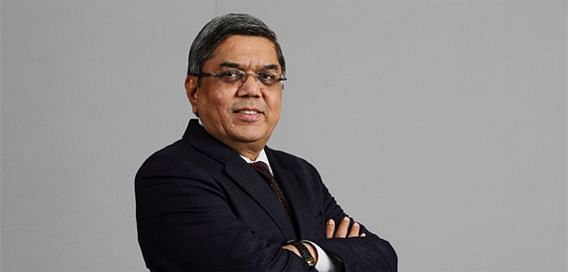[ad_1]
Tulsi Tanti was among the first Indian businessmen who saw the clean energy shift coming. He founded Suzlon Group in 1995 to make turbines when the market was dominated by global peers. A former textile trader, Tanti, too, had global ambitions.
In the decade through 2005, he slowly built Suzlon into a brand. And then came the blockbuster listing of 2005, propelling Tanti into the league of billionaires, earning him the moniker of ‘the wind man of India’.
Tanti died after a cardiac arrest on Saturday. He was 64.
He complained of chest pain in his car in Pune after returning from a press conference in Ahmedabad, said close friend Manu Pambhar told BQ Prime. He asked the driver to take him to a hospital but died before getting any medical help, Pambhar said.
He is survived by his wife Gita, son Pranav, and daughter Nidhi.
Tanti was an iconic figure and the first to represent India’s green goals on global platforms, according to Ashish Khanna, head of renewables at Tata Power Ltd. Tanti, he said, was instrumental in bringing early success to the “wind industry in our country and was always candid in his opinion on how to be Atmanirbhar in manufacturing”.
At its peak, Suzlon’s stock traded at Rs 460. It now has an installed capacity of more than 19.4 GW in 17 countries. The shares, however, closed on Friday at Rs 8.7 apiece. A legacy of the excesses of the boom years.
Suzlon’s global expansion was fuelled by debt. That included leveraged buyouts of Belgium’s Hansen Transmissions in 2006 for $431 million; and then Germany’s RePower Systems (now called Senvion) for more than $2.1 billion in 2007.
The first signs of trouble emerged in 2008. Blades of some of the Suzlon windmills cracked, forcing it to initiate a costly retrofit programme.
The same year, the company raised $500 million in overseas debt to fund expansion. But as values of global assets cratered during the global meltdown, it had to record mark-to-market loss on the bonds in 2009 and recognise an exceptional loss.
Refinancing didn’t help and as demand failed to pick up from the lows of the slowdown, Suzlon defaulted on overseas bonds in 2012. The company sold asset, including Hansen and RePower continued, but debt didn’t down debt materially.
Suzlon sought help under the erstwhile Corporate Debt Restructuring. And in 2015, Dilip Shanghvi, the Sun Pharmaceutical Industries Ltd.’s promoter, invested capital as a white knight.
And Tanti tried everything to avoid bankruptcy, betting on Suzlon’s importance in the renewable energy sector. “Bankers realise that India cannot afford to lose a company which is the largest in its wind energy space,” he told the Economic Times in a 2019 interview.
Suzlon, however, failed to emerge from the setbacks. In 2020, it entered into a restructuring pact with State Bank of India, the second time in a decade. It owed lenders more than Rs 12,000 crore at the time.
Earlier this year, Rural Electrification Corp., and state-owned Indian Renewable Energy Development Agency took over Rs 3,000 crore debt through refinance, while State Bank of-India led consortium of 16 banks settled for 5% equity in the company for the remaining Rs 3,500-crore loans.
[ad_2]
Image and article originally from www.bqprime.com. Read the original article here.

